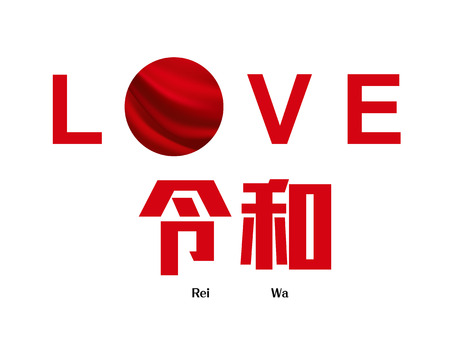1. What Is Feng Shui?
Feng Shui is an ancient Chinese practice that focuses on creating harmony between people and their environment. The term “Feng Shui” literally means “wind” (feng) and “water” (shui), which are two elements associated with good health and fortune in Chinese culture. At its core, Feng Shui is about arranging spaces—like homes, offices, and even gardens—in a way that promotes positive energy flow, known as “chi.”
The History of Feng Shui
Feng Shui dates back thousands of years to early Chinese civilization. Originally, it was used to find the best locations for homes, graves, and important buildings by observing the natural landscape. Over time, it developed into a complex system of rules and guidelines for interior design and architecture.
Key Elements of Traditional Feng Shui
| Element | Symbolism | Purpose in Feng Shui |
|---|---|---|
| Wind (Feng) | Movement of energy | Helps distribute chi throughout space |
| Water (Shui) | Flow and adaptability | Attracts prosperity and abundance |
| Chi | Life force or energy | Main focus for balancing spaces |
| Yin & Yang | Balance of opposites | Creates harmony within the environment |
| The Five Elements | Wood, Fire, Earth, Metal, Water | Used to balance different areas of life and space |
Feng Shui in Contemporary American Culture
In the United States, Feng Shui has become popular among people looking to improve their homes and workspaces. While some Americans follow traditional rules closely, many adapt Feng Shui principles to fit their lifestyles. For example, you might hear about arranging furniture to create a welcoming entryway or choosing paint colors based on the mood you want to set in a room.
How Americans Use Feng Shui Today
| Traditional Practice | Modern American Interpretation |
|---|---|
| Selecting home sites based on landforms | Picking homes with good natural light and pleasant surroundings |
| Strict adherence to compass directions | Arranging rooms for comfort and easy movement |
| Ceremonial rituals for blessing spaces | Simple decluttering or adding plants for fresh energy |
| Basing colors on Five Element theory | Selecting calming or energizing colors depending on personal preference |
The Ongoing Appeal of Feng Shui in America
Many Americans appreciate Feng Shui because it offers practical tips for making spaces feel better—whether that means boosting productivity at work or creating a peaceful home. While some may not follow every tradition, the core idea remains: our surroundings can influence our well-being.
2. Core Principles of Feng Shui
Understanding Qi: The Energy Flow
At the heart of Feng Shui is the concept of Qi (pronounced “chee”), which translates to “energy” in English. In Feng Shui, it’s believed that Qi flows through every space—your home, office, or even your favorite coffee shop. The goal is to keep this energy moving smoothly and positively because stagnant or blocked Qi can create negative vibes, leading to stress, discomfort, or even bad luck. Think of it like air circulation: fresh, flowing air feels good, while stale air makes you uncomfortable. Similarly, arranging furniture and choosing the right colors or decor in a way that allows energy to flow freely can make a space feel more welcoming and balanced.
The Balance of Yin and Yang
Another core idea in Feng Shui is Yin and Yang. These are two opposite but complementary forces found everywhere in nature. Yin is calm, quiet, and cool—think moonlight or a cozy bedroom. Yang is active, bright, and energetic—like sunlight or a busy kitchen. In American homes and offices, balancing these energies means mixing soft textures with lively colors or pairing restful areas with dynamic spaces. For example, you might want a peaceful (Yin) bedroom for better sleep but an energetic (Yang) living room for social gatherings.
The Five Elements: Shaping Your Space
Feng Shui also uses the concept of the Five Elements: Wood, Fire, Earth, Metal, and Water. Each element represents different qualities and can be brought into your space through color choices, materials, shapes, and decorative items. Here’s a quick guide:
| Element | Symbolizes | Common Colors | How to Use It |
|---|---|---|---|
| Wood | Growth & Vitality | Green, Brown | Add plants or wooden furniture for freshness and creativity. |
| Fire | Passion & Energy | Red, Orange, Purple | Use candles, lamps, or red accents for excitement and warmth. |
| Earth | Stability & Support | Yellow, Beige, Sandy tones | Ceramic pots or earthy colors help ground your space. |
| Metal | Clarity & Precision | White, Gray, Metallics | Add metal frames or decor for focus and efficiency. |
| Water | Calm & Abundance | Blue, Black | Aquariums or fountains bring relaxation and prosperity. |
Applying Feng Shui Principles in Home and Workspace Design
The combination of Qi flow, Yin-Yang balance, and the Five Elements guides decisions in arranging both homes and workspaces across America. For instance:
- Avoid blocking doorways with large furniture so energy (and people!) can move freely.
- Add plants in your office for Wood energy that supports growth and motivation.
- Create a calming corner in your living room with Water elements like a small fountain for relaxation after a busy day.
This approach helps transform ordinary rooms into spaces where you feel comfortable, energized, and truly at home—no matter where you live.

3. Common Feng Shui Applications in the U.S.
Feng Shui has become increasingly popular in the United States as people look for ways to create more harmonious and balanced environments. While rooted in ancient Chinese philosophy, Americans have adapted Feng Shui principles to fit modern lifestyles, from home décor to workspaces and even outdoor areas. Here are some of the most common ways Feng Shui is incorporated in everyday American life:
Interior Design and Furniture Placement
One of the easiest ways Americans use Feng Shui is by arranging furniture to promote good energy flow, also called “chi.” This often means placing sofas, beds, and desks in a way that faces the door but isn’t directly in line with it, which is believed to bring a sense of security and control. Clutter-free spaces are also essential, as they help energy move freely throughout the home.
| Room | Common Feng Shui Practice |
|---|---|
| Living Room | Sofas facing the entry, avoiding backs to doors |
| Bedroom | Beds placed diagonally from the door (command position) |
| Home Office | Desks facing the door, using plants for balance |
Color Choices and Décor
Color plays an important role in Feng Shui. In the U.S., many people select paint colors, artwork, and accessories based on how they want a room to feel. For example, blues and greens are chosen for calmness in bedrooms, while reds or oranges may be used for energy in social spaces like kitchens or living rooms. Mirrors are often used to reflect light and expand space but are carefully placed to avoid reflecting clutter or facing beds directly.
Landscaping and Outdoor Spaces
Feng Shui isn’t limited to interiors—many Americans apply its principles to their yards and gardens as well. A curved walkway leading up to the front door is preferred over a straight path, which is thought to allow energy to flow more gently. Water features such as fountains or small ponds are added near entrances for prosperity and relaxation. Additionally, well-maintained plants and flowers are used to attract positive chi.
| Outdoor Feature | Feng Shui Benefit |
|---|---|
| Curved Pathways | Smoother flow of energy to the home |
| Water Features (fountains/ponds) | Attracts abundance and harmony |
| Lush Plants & Flowers | Encourages vibrant and positive energy |
Office Environments and Workspaces
The modern American workplace has also embraced Feng Shui concepts. Many offices now consider desk placement, lighting, and organization to support employee productivity and wellness. It’s common to see plants in office spaces for air purification and a sense of calm. Some companies even bring in Feng Shui consultants during renovations or moves.
Quick Tips for Feng Shui at Work:
- Avoid sitting with your back to the door; use a mirror if necessary.
- Add a small plant or natural element on your desk for balance.
- Keep your workspace organized and free of unnecessary items.
This blend of science, philosophy, and practical application helps explain why so many Americans turn to Feng Shui when designing their homes, offices, and gardens. By making mindful choices about space arrangement, color, décor, and nature, people hope to enhance well-being and invite positive energy into their daily lives.
4. The Scientific Perspective: Is There Evidence?
When people in the United States hear about Feng Shui, they often wonder if there is any real science behind it. While Feng Shui has deep roots in ancient Chinese philosophy, many Americans are interested in how it stands up to modern scientific examination. Lets explore what research says, what experts debate, and how Western science views its potential benefits.
Exploring Scientific Studies on Feng Shui
Scientific studies on Feng Shui are limited, especially those published in English-language journals. Most research focuses on whether Feng Shui principles can impact our well-being or environment in measurable ways. Some studies look at how changes in lighting, color, space arrangement, and natural elements influence mood and productivity—ideas that overlap with Feng Shui concepts.
| Feng Shui Principle | Related Scientific Study | Possible Benefits |
|---|---|---|
| Decluttering & Organization | Environmental psychology research | Reduces stress, increases focus |
| Natural Light & Airflow | Studies on daylight and ventilation | Mood improvement, better sleep quality |
| Incorporating Nature (plants, water) | Biophilic design studies | Boosts relaxation, lowers anxiety |
| Color Choices | Color psychology studies | Affects emotions and energy levels |
Current Debates Among Scientists and Experts
Many scientists remain skeptical about the idea that Feng Shuis energy flow (Qi) can be measured or proven by current scientific methods. Critics argue that much of Feng Shui is based on tradition rather than empirical evidence. However, others believe that even if the mystical aspects arent scientifically validated, some practices may still have psychological or practical benefits.
The Psychological and Wellness Angle
Western wellness experts often highlight the value of intentional design for mental health. For example, arranging furniture to promote openness and comfort can make a home feel more inviting—a core idea in both Feng Shui and modern interior design. Psychologists also note that making mindful changes to your surroundings can provide a sense of control and satisfaction.
Main Points Recognized by Western Science:
- Personal Well-being: Living in an organized, aesthetically pleasing space supports mental clarity.
- Mood Enhancement: Access to natural light and calming colors can lift spirits.
- Reduced Stress: A tidy environment helps reduce anxiety and increase relaxation.
- Satisfaction from Mindful Living: Making thoughtful adjustments to your space can boost happiness.
The bottom line? While science hasnt confirmed all of Feng Shuis traditional claims, many of its practical recommendations align with principles known to improve well-being. In American homes, these ideas often blend seamlessly into everyday life as part of a holistic approach to creating happier, healthier spaces.
5. Blending Feng Shui and Modern Living
Practical Tips for Applying Feng Shui in American Lifestyles
Feng Shui isn’t just about traditional Chinese homes or ancient beliefs—it can fit perfectly into modern American life. You don’t need to follow every rule to benefit from its principles. Here are some simple ways to blend Feng Shui with your everyday living, while respecting its cultural roots and making it work for contemporary needs.
Start with Your Entryway
The front door is called the “mouth of Qi” in Feng Shui, where energy enters your home. In the U.S., this could be a porch, foyer, or even the mudroom. Keep this area clean, well-lit, and welcoming. Add a small rug, a healthy plant, or a piece of uplifting art near the door to invite good energy in.
Harmonize Common Spaces
Arrange your furniture so it’s easy to move around and no one has their back to the main entrance when sitting—this helps people feel more secure and comfortable. Choose colors that make you feel calm and happy. In open-plan homes popular in America, use rugs, plants, or shelves to define spaces without blocking flow.
Bring Nature Indoors
Americans love the outdoors—so does Feng Shui! Try adding houseplants, fresh flowers, or natural materials like wood or stone. Even a few touches of green can boost positive energy and air quality.
Personalize Your Spaces
Your home should reflect who you are. Display family photos, travel souvenirs, or favorite artwork in moderation. Too much clutter can block energy, but meaningful items bring joy and balance.
Adapting Traditional Feng Shui for Contemporary Needs
| Traditional Feng Shui | Modern American Adaptation |
|---|---|
| Use of Bagua map based on compass directions | Overlay Bagua on rooms using main entrance as reference point |
| Avoiding mirrors facing the bed | Place mirrors thoughtfully; avoid directly across from beds or doors if possible |
| No clutter under beds (Qi circulation) | Minimize storage under beds; use shallow bins for essentials only |
| Use of water features for wealth areas | Add a small tabletop fountain or aquarium in living room corners, not bedrooms |
| Traditional red doors for luck | Choose front door colors that feel welcoming and express your style—red is optional! |
Easy Changes Anyone Can Make
- Let in natural light: Open curtains during the day; use warm lamps at night.
- Add fresh air: Open windows when weather allows; use air-purifying plants.
- Create quiet zones: Set up a cozy reading nook or meditation spot for relaxation.
- Tidy regularly: Clear surfaces often to keep energy flowing smoothly.
- Balance tech with nature: For every screen or device, add something natural nearby.
Cultural Respect Meets Modern Comfort
You don’t have to follow every classic rule to enjoy a peaceful home. The key is blending what feels right for you with some core Feng Shui ideas—balance, harmony, and mindful arrangement. This way, you create a space that supports both your lifestyle and well-being while honoring the tradition’s spirit.


